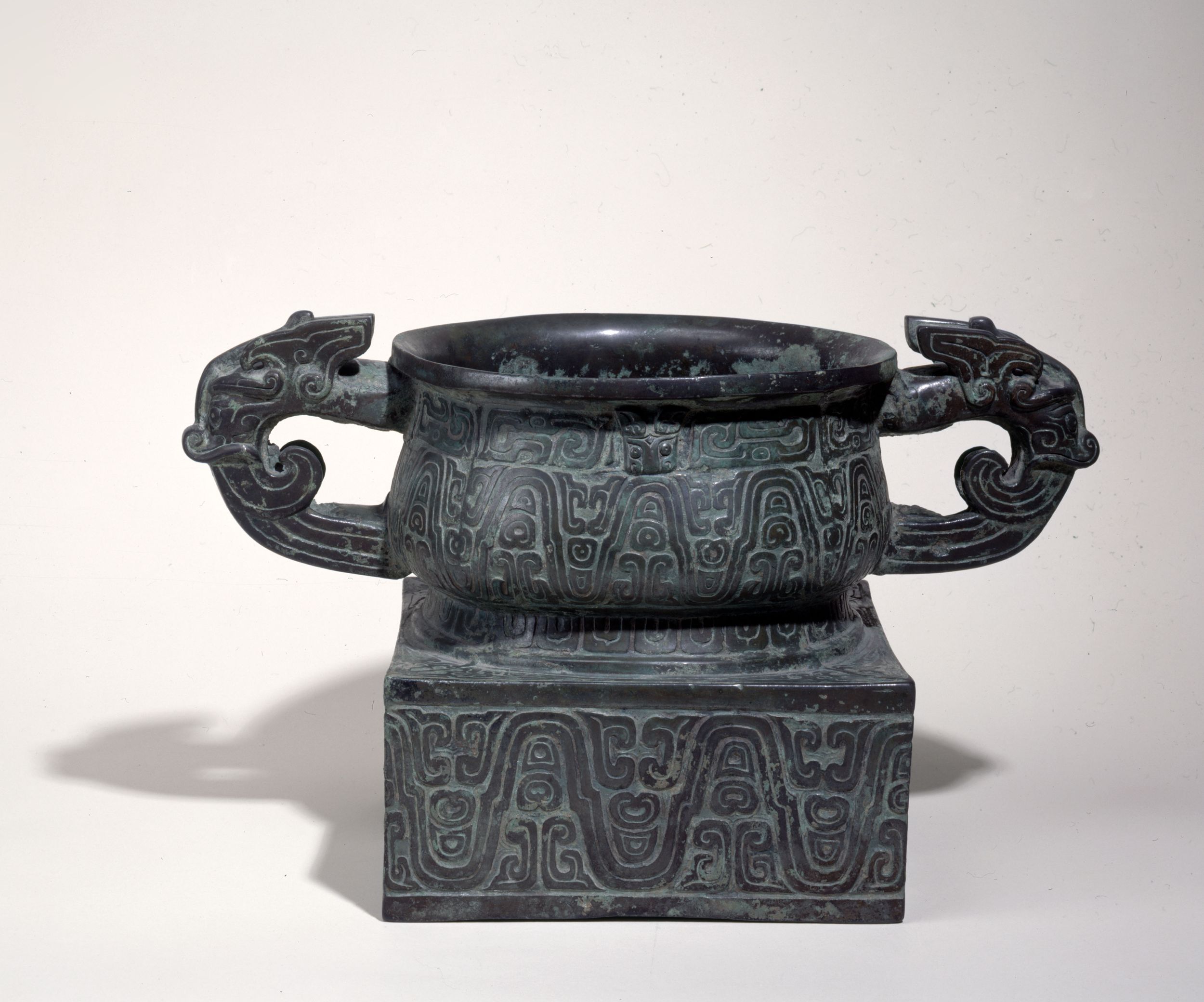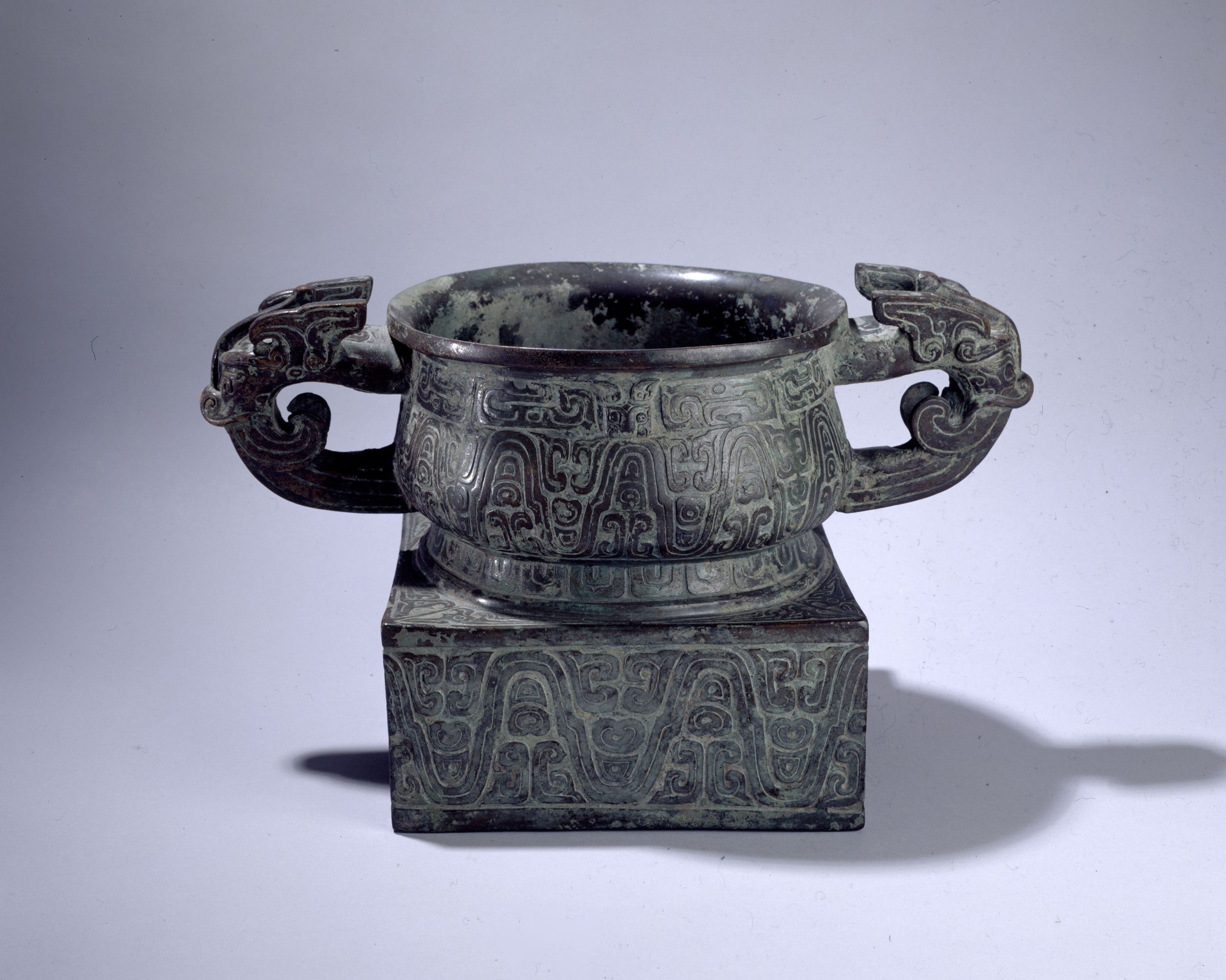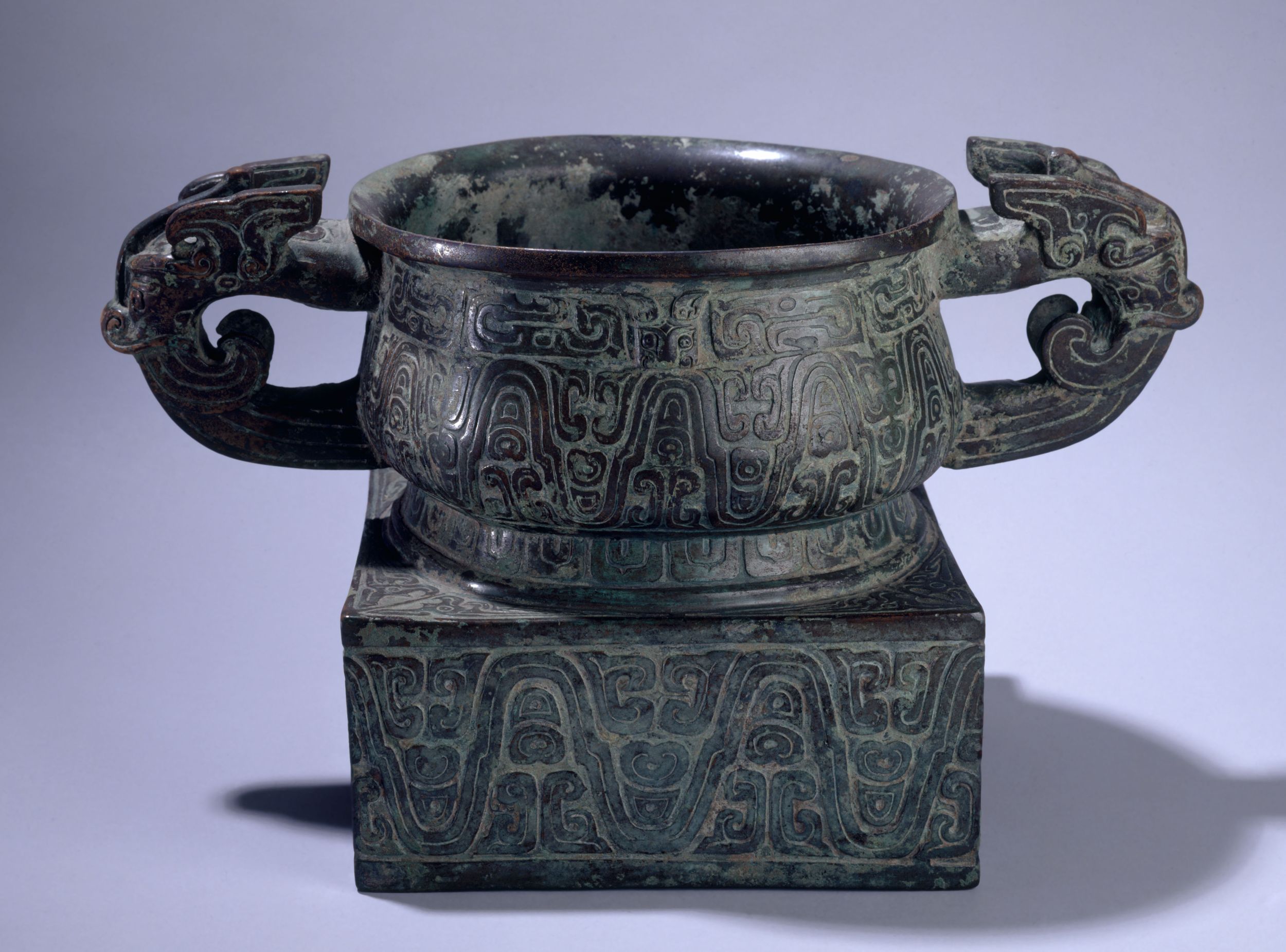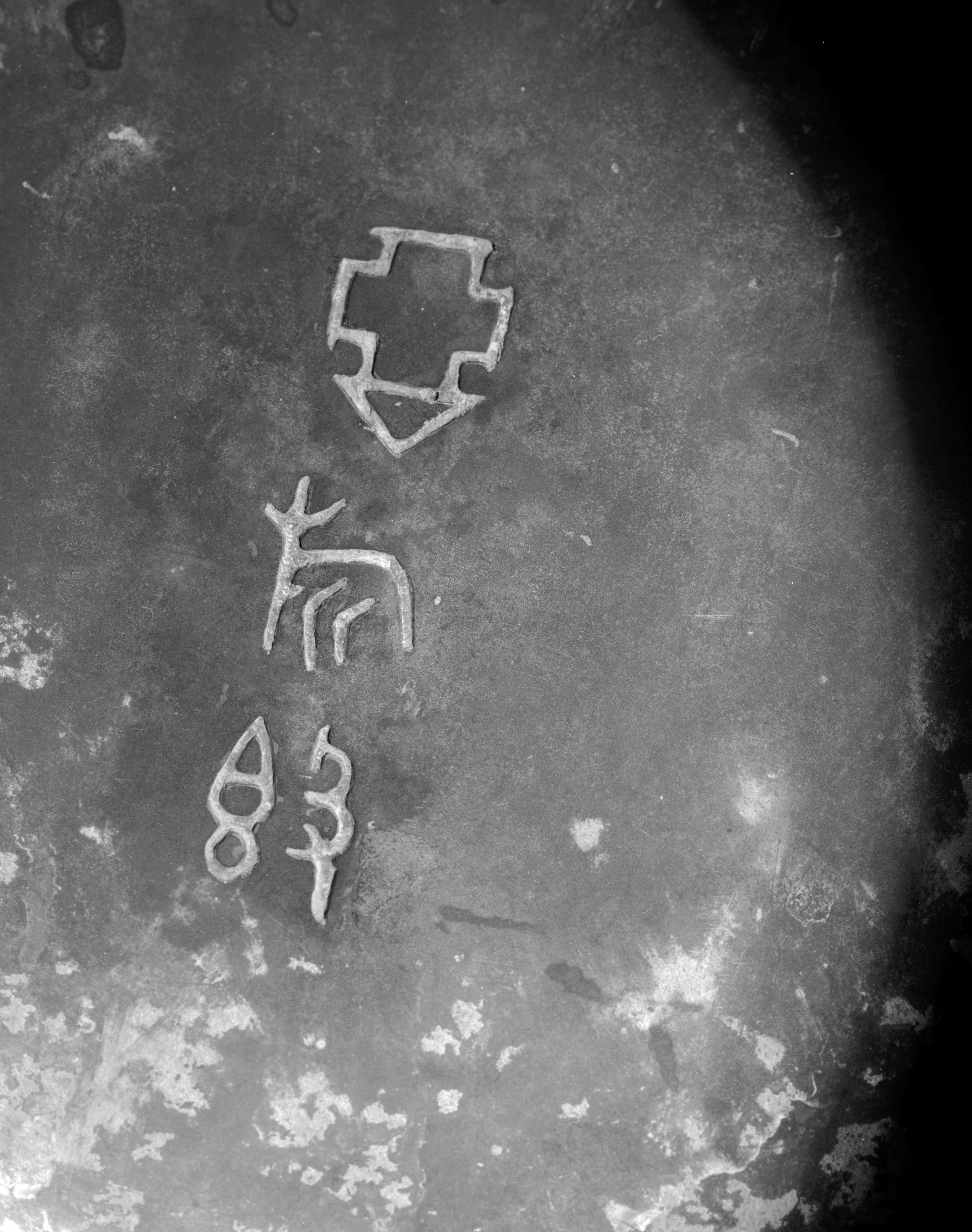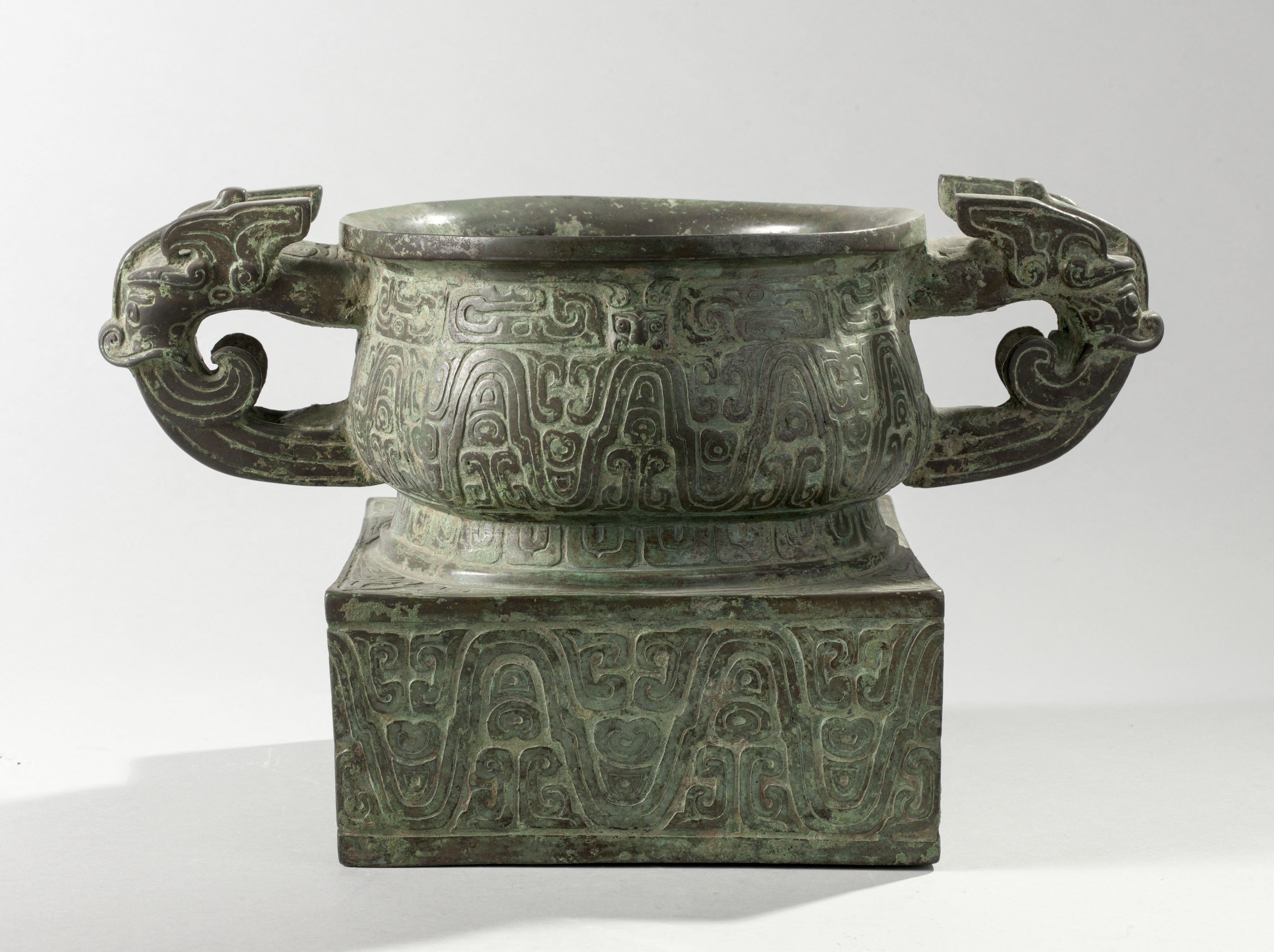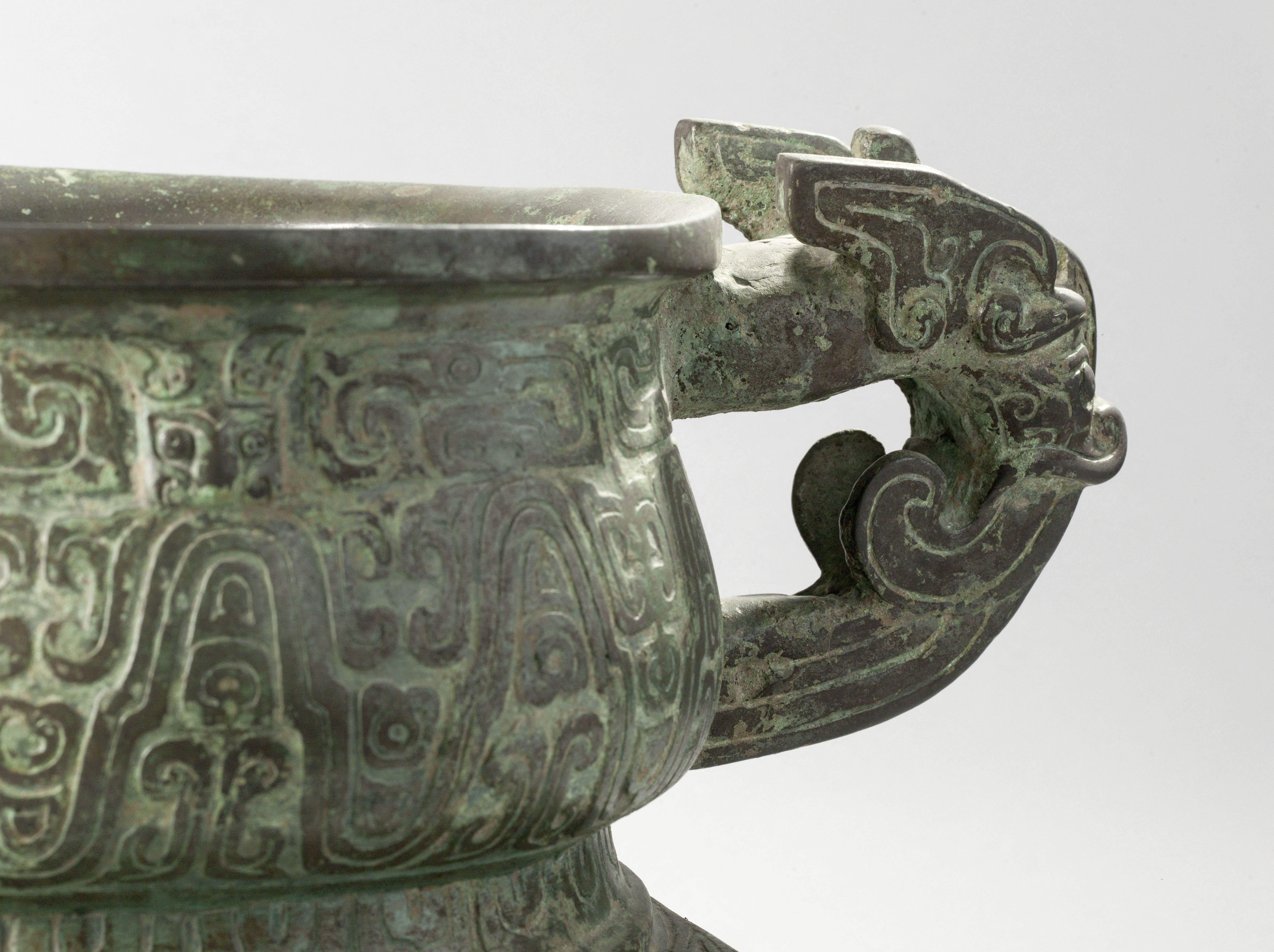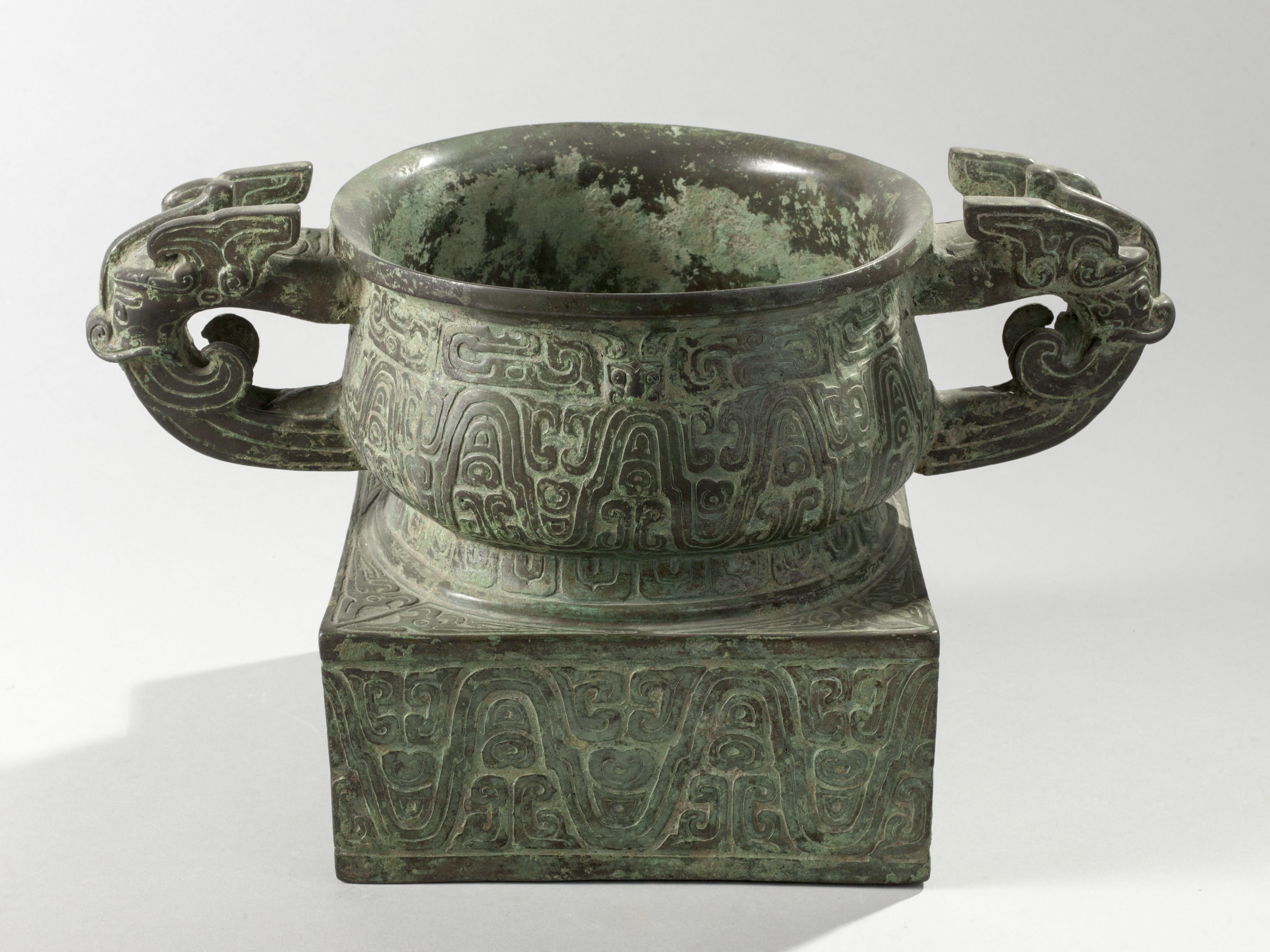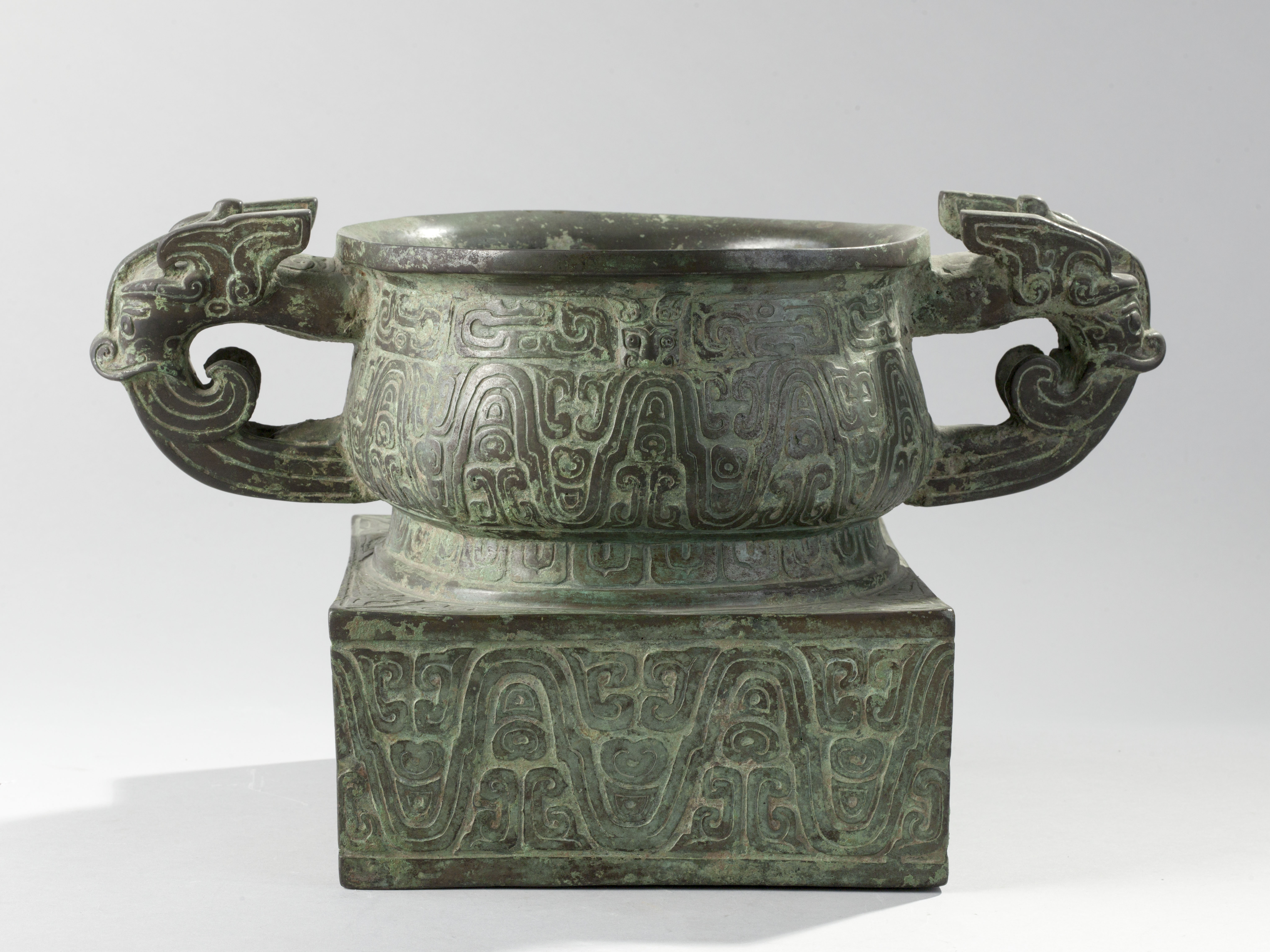
Vase gui 簋
Bronze, Fonte, Fonte au moule
Vaisselle et ustensile de cuisine, Vase, Objet religieux
Achat
M.C. 8809
The vessel, round-bellied towards the base, has two large handles each in the form of a dragon with winged ears swallowing a bird, with only the bottom of the bird’s wings visible. In the late Western Zhou dynasty, certain gui, like this one, stood on a wide parallelepipedic base.
Following on from the characteristic animal-themed designs from the Shang period that were still in favour under the early Zhou dynasty, a new decorative vocabulary emerged in the 9th century BC, featuring geometrical motifs in light relief against a bare ground, which were only very distantly reminiscent of their zoomorphic origins. Here, wide undulating ribbons like waves trace large triangles containing purely ornamental elements, the final remnants of the animal masks of the previous era. The same goes for the motifs in the frieze around the neck, distant echoes of the dragons often found there previously.
